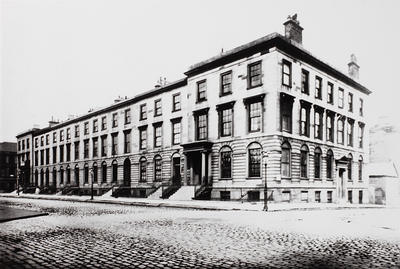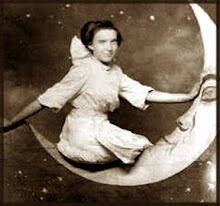 Madeleine Smith (abt 1835-1920) was a Glasgow socialite involved in a sensational murder case in Scotland during the summer of 1857. The notoriety of the case was such that it was known not only in Great Britain, but also in Europe and America.
Madeleine Smith (abt 1835-1920) was a Glasgow socialite involved in a sensational murder case in Scotland during the summer of 1857. The notoriety of the case was such that it was known not only in Great Britain, but also in Europe and America.Madeleine came from a wealthy, upper class family. Her father was well known architect James Smith. Madeleine went to boarding school in London and returned to Glasgow when she was 18. Not long after this she met Pierre Emile L'Angelier.
Emile L'Angelier was a French nurseryman and warehouse clerk who had moved to Glasgow in 1852. Glasgow is where Emile first took notice of the beautiful Madeleine Smith. Emile then began to search for a mutual acquaintance who could introduce them, as was the custom of the time in polite society. In the spring of 1855 the two finally met.
It was not appropriate for a lady of the upper class and a warehouse clerk to be seen together, but Madeleine found him exciting and exotic so she commenced correspondence with him. Meetings between the two were arranged and when Madeleine's father found out he demanded an immediate end to the friendship. Despite her father's forbiddance, Madeleine continued to secretly meet with Emile.
The correspondence continued, and they would refer to each other as husband and wife. Their romance intensified and they began planning their wedding and in the summer of 1856, the unthinkable taboo of Victorian times was broken - they became lovers.

All the while Madeleine's parents, unaware of their daughter's affair, were searching for a suitable husband for their daughter. They finally settled on William Minnoch. In September of 1856 he stayed with the Smiths at their summer home in Helensburgh where he and Madeleine spent some time together. Madeleine accepted William's marriage proposal in January 1857.
Madeleine wrote Emile in February to sever all ties with him. Emile, however, refused to comply and instead he threatened to show all the letters he had kept to Madeleine's father (they had wrote some 250 love letters between them). Madeleine wrote more letters begging Emile not to expose their actions to anyone and requested that he meet her in secret.
Emile L'Angelier is what they called an "arsenic eater", meaning he would take arsenic for various 'health benefits'. Around this time (February 1857) he began to complain of stomach pains and nausea. He told a friend he did not know why he felt so sick after taking coffee and hot chocolate with Madeleine. He also claimed that if she were trying to poison him he would forgive her. During this time Madeleine had gone to a few local apothecaries and bought arsenic which she claimed to be for killing rats (this is known because she had to sign the poison book as was required).
Emile died the 23rd of March 1857 of arsenic poisoning. Madeleine, at 22 years old, was arrested on the 31st of March (based on the stack of letters found). When questioned about the arsenic she purchased (3 separate occasions) Madeleine claimed she bought it to mix with water and use on her face and arms for her complexion.
The case of Madeleine Smith was moved from Glasgow to Edinburgh due to such strong, popular interest. The news of the case was in papers in both America and Europe. The evidence in the case was this:
Evidence against Madeleine
Evidence against Emile
William Minnoch's grave can be found in the Glasgow Necropolis: you can see a picture of his monument here.
*Pictures: Madeleine Smith at her trial and 7 Blythswood Square, Glasgow, where the Smiths lived.
*Sources: A Most Curious Murder, Crime Library and The Scotsman




Wow! Such a crazy bitch! Going by poisoning people is an insane idea! I wonder what would she have done with some viagra online
ReplyDeleteVery good posting. i liked it. :-) I really enjoyed, I would like get more information about this, because is very beautiful, Thanks a lot for the informative article.
ReplyDeletePM Gallery
I read all the court transcripts. If l was on the jury l would also have reached a "not proven" verdict.
ReplyDeleteSimply because..... If she didn't kill him & married another man, he would give the letters to her father.
If she did kill him those letters would be found & the whole of Scotland would see them published....... Which is exactly what happened.
So his death was a much worse situation. As not only would those letters be read in court but she may well have been hanged.
So she was either very stupid or he committed suicide & framed her as the defence claimed.